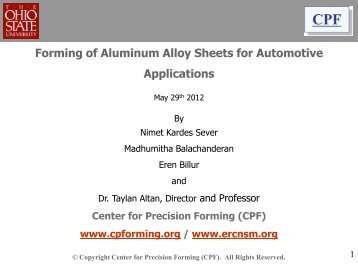Aluminum Standards And Data Pdf
For more than 60 years, the Aluminum Association has worked with the industry to develop and maintain technical standards for aluminum production. Aluminum Standards & Data, The Aluminum. Association, 1997. Wrought Alloys: 1xxx Pure Al. Principal characteristics and applications of the 1xxx series of aluminum alloys include. This publication is being made available in PDF format as a benefit to members and customers of ASM. You may download. Abstract: This Standard provides a guide for the selection of appropriate aluminum alloys for rail passenger equipment. This Standard is limited to the application of aluminum alloys for construction of passenger rail equipment car. Units, in ASTM and Aluminum Association standards and data documentation. As a free downloadable pdf from The Aluminum Asso- ciation website: www.aluminum.org/tealsheets, as well as. Aluminum Standards and Data 2009,2 recently published by The Aluminum Association. As mentioned in. Perative that aluminum alloy standards become more universal in order to assure consistency in the.

Aluminium electrolytic capacitors with non-solid electrolyte have a wide range of styles, sizes and series Aluminum electrolytic capacitors are polarized whose (+) is made of a pure foil with an surface. The aluminum forms a very thin insulating layer of by that acts as the of the capacitor.
A non-solid covers the rough surface of the oxide layer, serving in principle as the second electrode () (-) of the capacitor. A second aluminum foil called “cathode foil” contacts the electrolyte and serves as the electrical connection to the negative terminal of the capacitor. Aluminum electrolytic capacitors are divided into three subfamilies by the type of electrolyte: • non-solid (liquid, wet) aluminum electrolytic capacitors, •, and •. Aluminum electrolytic capacitors with non-solid electrolyte are the most inexpensive type and also those with widest range of sizes, capacitance and voltage values. They are made with capacitance values from 0.1 µF up to 2,700,000 µF (2.7 F), and rated voltages values from 4 V up to 630 V. The liquid electrolyte provides oxygen for re-forming or self-healing of the dielectric oxide layer.
However, it can evaporate through a temperature-dependent drying-out process, which causes electrical parameters to drift, limiting the service life time of the capacitors. Due to their relatively high capacitance values aluminum electrolytic capacitors have low values even at lower frequencies like. They are typically used in, and for smoothing and buffering rectified DC voltages in many electronic devices as well as in industrial power supplies and frequency converters as for, for, and in. Special types are used for energy storage, for example in or applications or for frequency coupling in audio applications. Aluminum electrolytic capacitors are polarized capacitors because of their anodization principle. Change Drivers License Address Ga.
They can only be operated with voltage applied with the correct polarity. Operating the capacitor with wrong polarity or with voltage leads to a and can destroy the component. The exceptions is the bipolar aluminum electrolytic capacitor, which has a back-to-back configuration of two anodes in one case and can be used in AC applications. Basic principle of anodic oxidation, in which, by applying a voltage with a current source, an oxide layer is formed on a metallic anode Electrolytic capacitors use a chemical feature of some special metals, earlier called 'valve metals'. Applying a positive voltage to the anode material in an electrolytic bath forms an insulating oxide layer with a thickness corresponding to the applied voltage.



